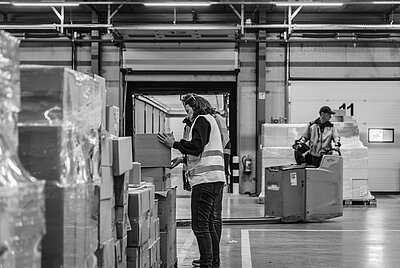Every customer, by any means
Brands with a physical presence already have a lead on their digital-only rivals. They have the infrastructure in place to offer in-person shopping, touch and try, and click and collect which, when paired with an app or web store, has the power to enrich the shopping experience. The investment required of an online-only retailer that wanted to provide a comparable shopping experience would be prohibitive, even with retail rents suppressed and landlords offering sweeteners in the wake of the pandemic.
The best option for a digital-first brand would be to piggyback the services of existing high street outlets, like eBay has done in the UK, where successful bidders, who will initially have completed the purchase through a browser or app, can opt to collect the goods at Argos or one of 3,500 collection points, which include local post offices and corner shops.
When products are available through multiple channels, they are easier and more convenient for the customer to source, and points of friction are reduced in comparison to those experienced with rival brands. This helps make the omnichannel retailer many customers’ preferred choice.
Look beyond the obvious
Apps, websites and physical stores are obvious routes to the customer, but they are not the only contact points. WhatsApp has made it easier for brands to interact with customers through its messenger service by producing dedicated tools for businesses. These allow businesses to showcase up to 500 products and services at a time, by creating a catalogue that is accessible through the app, complete with descriptions, product codes and direct purchase links.
Social media channels are increasingly being used by customers to ask questions to which they expect a quick response. Research by Lucid found that 39% of customers using WhatsApp and 34% using Instagram expected brands to answer within the hour.
However, almost four in five customers have named live chat as their preferred communications tool, perhaps because responses often arrive more quickly. As revealed by Acquire, “according to the latest industry reports, it takes less than 48 seconds for companies to pick up on a live chat request after customer initiation.” When brands are responding in less than a minute, rivals that add live chat to their omnichannel offering should be aiming to match or beat that benchmark.
The offline experience, online
Online shopping trumps offline retail because it can be done from the comfort of home – but in many ways, it is an incomplete experience. You can’t touch the products before you buy them and, when shopping for clothes, you can’t try them on, either.
Providing cloth or paper samples is an option for online retailers selling furniture and home decor, but that’s a less practical option for clothing retail, where fit is just as important as finish. A simple step like deferring payment until the customer has had the option of trying on clothes that they have ordered could well be enough to overcome this shortcoming, effectively moving the fitting room from the store to the living room, and giving customers the opportunity to sample more outfits than they intend to buy, just as they would on the high street.
Some subscription clothing brands work in a similar fashion, dispatching gym wear, workwear and even second-hand clothes at regular intervals, with free returns for anything the customer doesn’t like.
Selective omnichannel
But best practice in omnichannel isn’t always a case of selling every element through all channels. Some of the most successful brands take a more careful approach, choosing to expose just a subset of their offering across all possible channels, while keeping back complimentary products that can profitably reach consumers through more selective routes.
Nespresso is a case in point. While its coffee machines are sold through a branded app, website, Nespresso’s own stores and outlets like John Lewis, Saturn and FNAC, ‘genuine’ capsules are only available through Nespresso itself. It is still an omnichannel offering, as the Nespresso website and app complement a chain of boutiques, frequently in upscale neighbourhoods – but it doesn’t maximise its retail exposure by selling capsules in supermarkets, alongside ‘compatible’ rivals.
Doing so has set apart Nespresso capsules as an exclusive offering, in the face of competition from other tier-one brands, like Starbucks and L’Or. Its brand gains direct customer exposure through third-party retail displays of Nespresso machines, while it simultaneously retains control of the supply of branded capsules. These are easily distributed through mail order and, being compact and space efficient, enable Nespresso to minimise rent in premium locations by carrying a full range of stock in smaller retail outlets.
Best practice in omnichannel will always aim to make the customer’s shopping experience more enjoyable and less of a chore. However, it is important to think not only of the customer profile when devising a strategy, but also of the brand itself and how it relates to each channel.
It may well be, as Nespresso has shown, that some routes to the customer simply aren’t required.
For advice on getting your retail environment in top shape for consumers, speak to our team on +31 (0) 88 494 20 80 or email us at online@worldpack.eu


